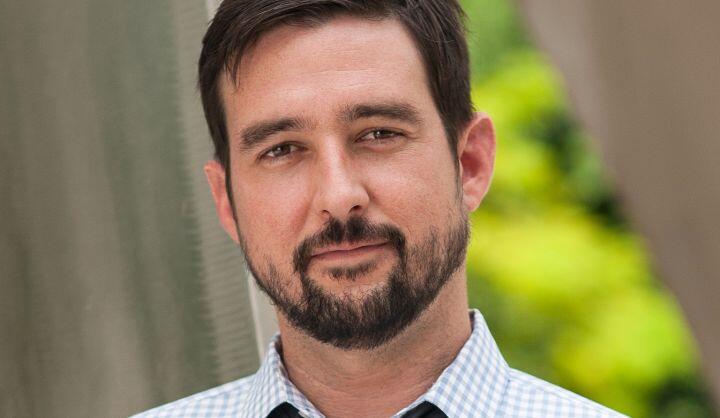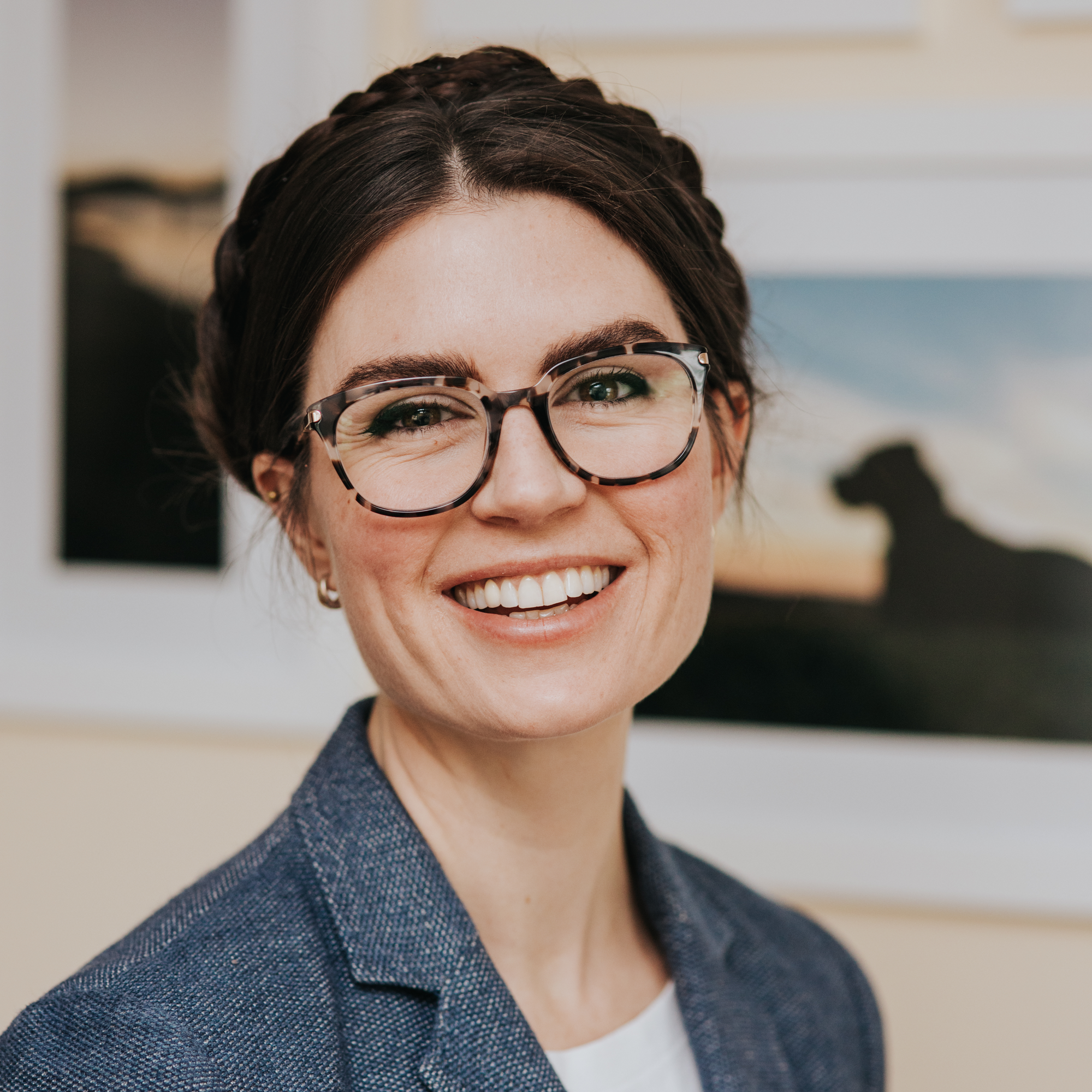
- June 5, 2019
- Civic Analytics Network
 As Chief Innovation Officer for the City of Miami, Mike Sarasti spends a lot of time listening. Intent on disrupting outdated methods for government IT development, Sarasti has made it a priority to get out into community businesses, run workshops in neighborhood satellite offices, and even have his staff bring iPads around city hall to run impromptu user testing. Embedding feedback is a top priority, and this dedication to inclusion is evident in everything he does, from redesigning the Miami government website to educating his staff.
As Chief Innovation Officer for the City of Miami, Mike Sarasti spends a lot of time listening. Intent on disrupting outdated methods for government IT development, Sarasti has made it a priority to get out into community businesses, run workshops in neighborhood satellite offices, and even have his staff bring iPads around city hall to run impromptu user testing. Embedding feedback is a top priority, and this dedication to inclusion is evident in everything he does, from redesigning the Miami government website to educating his staff.
As anyone who does community engagement can tell you, it’s hard work. And Sarasti is upfront about the effort it takes to seek out and truly listen to feedback. During our conversation he acknowledges that he challenges his staff, asking them to put aside their personal feelings about their work to listen to users. Sarasti believes that building empathy and trust are two keys to honestly hearing and incorporating user feedback, which in turn allows government to build better tools for residents. Read on to hear about collaborating across sectors, creating a sacred space for user feedback, and why sometimes the best community engagement is at the local bar!
Betsy Gardner: Thanks for speaking with us today! The first question I have is what does good community engagement look like, sound like, feel like to you?
Mike Sarasti: I think it’s about establishing that continuous conversation with our residents. We talk a lot about embedding feedback loops, which is what you’re doing when you're having a conversation. We’re embedding that in everything we do.
And that’s actually really hard. But we’re trying to make that a value that we share, to always sit back and listen. And it’s what you want to do when you’re having a good conversation with people that you know! It’s weird that we don’t do that when we’re building software or providing a service, it’s often just one-way. The real focus on having a two-way conversation and modeling that by being a good listener is just really important.
BG: That’s a good point, we’re not always good at scaling up our conversation and listening skills.
MS: Yeah, and it’s a whole different type of listening skill set that you have to use when you’re writing a process or working on software and you have to do that at scale. It requires a lot of time and resources, and going your of your way to make those work. What we’re finding is that people really want to do it but they don’t know how to at scale, or in a way that we can document that feedback, share it internally, and make it really useful. So how do we embed those practices? This is what we’re tackling now.
BG: That leads me into my next question, which is why does community engagement matter specifically for a department that’s doing information technology or innovation?
MS: Let’s take the internal side first, which is that who wants to be building a bunch of stuff that no one is going to end up using? It’s such a morale killing thing -- the old way of building IT was to spend this long time gathering all these requirements and then going into a cave and building your thing. Then everyone’s impatient and wants to see it and when you have this grand launch day after months (or years in some cases), everyone’s response is “Eh.”
Just from the internal perspective, to do things that matter and that people respond to, we have to embed feedback and embed it early, so that we can say “We’re building the right thing. We’re building the thing that people actually want us to build.”
On the community side of it, we [both government and IT] have a reputation for being off the mark far more often than we’re on the mark, in terms of knowing what people actually need. And historically we don’t spend enough time up front, digging into that and asking the right questions. We’re moving in the right direction now.
BG: Speaking of feedback and user-focused practices, how do you make sure that you’re reaching everyone when you’re in a really diverse city, where there’s a large immigrant population, and many people who are non-native English speakers? How are you making sure you’re getting into communities that might not typically be reached with this messaging?
MS: It’s hard, but we rely on a couple different partners with that. In the case of our website, we leaned a bit on Code for Miami, who had received a Knight Foundation grant for building a CUT [civic user testing] group. And because of that they were able to get people to join in by offering some gift card incentives. They developed a database and were really intentional about making sure they had people in lots of different groups, so we were able to bring in users from different communities.
That was helpful, not just relying on whoever showed up; when you do that you often get the same people. It was a good method but it relied on funding, and we were very fortunate to have the Knight Foundation funding to help Code for Miami, and in turn help us.
As part of our resident survey, run by Cheriene Floyd to support strategic planning efforts, we rely heavily on our neighborhood enhancement teams, which are like satellite city hall offices in the neighborhoods. Those offices are close to what’s happening on the street.
We coordinated a series of workshops with those offices and homeowners associations, and we went out to the community. We tried to find the coffee shops that people frequent at night. We would have an evening there and do Cafe Conversation events. That worked out really well, people were super engaged, putting post-it notes up on their ideas.
That’s still the hardest thing, because it requires event logistics -- and it’s multiple events, it’s not just one and you’re good. You really have to do six or seven to make sure you’re capturing the fabric of the city. In some cases the local churches will help us, or the homeowners association. You really need to find who is in touch with those particular areas, and they’re often different people. Could be the local bar! You just need to do a little bit of the work and understand those areas.
BG: Absolutely, each area is going to require something different. I was going to ask if you worked with other non-government groups for this, but it’s clear you’re doing a lot of cross collaboration. When you go in those communities and you do those events, how do you handle if people have negative reactions? Or feedback that might not even be about your work, but they’re seeing you as representative of the Miami government and so they’re giving you unrelated feedback?
MS: Yeah, that’s a great question and a very real thing. I want to get all of my staff really thinking about what it looks like when you’re getting feedback. And when it’s your process, or you know the person that did that, or you’re proud of being a city employee, the tendency is obviously to get very defensive. So we remind them that their goal out there is to listen and make it easy for the users to provide feedback.
You want to go to where people are at, show them how you’re using their feedback, and have a conversation about how this is going to work into a process. That helps build trust, because that’s another thing that you’re doing here. You’re coming in as a government employee and some people will automatically distrust you -- happens a lot, just because you’re government -- so showing them what you’re doing with their thoughts and communicating back is important.
Again, another big lift and those things are hard. You have to carve out the time to communicate back to people about what you’re doing and how you’ve used their feedback. We tell our employees a lot that this work is the hardest. I tell them, you’ve just got to sit and watch and feel the pain and frustration. And that is so powerful, because it builds empathy in the person who built the project, and respect. You are not there to argue back or give explanation or to rationalize. You can’t mix up the act of asking for feedback with educating users. When they’re giving feedback, that space is sacred.
BG: Kudos to you for setting your staff up for success and really preparing them. Facilitating can be incredibly challenging, but letting them know what feelings might come up is so important.
MS: Thanks! It takes a lot of practice to feel that. But you know, it’s the long cultural game. I think that’s been the big lesson for me over time. This work takes a long-term mindset and an appreciation for the long game, because you’re dealing with hard, human condition stuff on both sides.
Feedback isn’t a stand-alone check-the-box thing. Once it’s part of the workflow and staff can see that it’s helping them be better, the whole dynamic and the conversation starts to shift. We’re creating more opportunities for feedback: user forms on our website, different field surveys by the building department, testing new site pages on tablets in the customer service areas of city hall.
BG: That’s great, you can capture so many different types of users this way. In regards to the online forms, I know you just recently launched a renovated version of your website. Can you tell us about the community engagement process you undertook to update the Miami government site?
MS: It was a big deal! When I was in the City Manager’s Office, that was one of the projects I took on, with the Miami web team and OpenCities. We started very quickly and put an alpha together within a couple months. We were really intentional, and said we weren’t going to do any copy and pasting. We started with our alpha version, only eight to ten services, and worked with Code for Miami to do those CUT groups. We got a lot of customer feedback and engagement, everything from “the background isn't right” to “this service doesn’t make any sense.” We spent the next year in procurement while we continued to do user testing at conferences and events, and then we built our beta.
That version scaled up the eight to ten services to about 100 services. When we hit that mark we switched our beta over to the official site, and archived our old website; we currently have over 200 services on the new one. Right now they both coexist, but we’re doing user feedback on every step as we grow the site. The last thing we did on the beta was add the Qualtrics user survey, so every page has a link and we can tell which page it comes from when we get the feedback. So if someone says “I can’t find this link,” we realize we should have put a link to a related service so someone can find that one as well.
And whenever we go to an event we’ll bring a few tablets and use that as an opportunity to have people test a few services. If it’s a building-related event we’ll pick two or three services and say “hey, why don’t you try to get a fence permit?” We try to contextualize with the event and pick related services.
BG: That continual user testing must make such a different as you continue with the site. You mentioned this earlier as well, but how do you get back in touch with the people who give this feedback? So they know that you took that into account with each iteration?
MS: Sometimes we’ll do it at the event, where the user does testing for the first 30 minutes and then after we talk about the process and how we can incorporate their feedback, and they’re usually really receptive to that. We’ve also worked with groups like Support Local, and a local PR firm call Prism Creative Group. They got a group of business owners together so we could do testing with them and then communicate back through those groups. We got a lot of good feedback from that.
And we tweet a lot, give info in our press releases. We also have a dedicated user testing session every month. We block off a room in city hall and employees can bring in something they want to launch.
BG: Good for you all for putting in that effort! Thanks for speaking with us today, you gave a us a lot to think about when it comes to community engagement. Especially understanding the importance of empathy and trust when you’re building tools for the public. We’re excited to see what you do next, will definitely be checking out the Miami website as you keep iterating and improving!
This interview has been lightly edited for clarity and concision.




